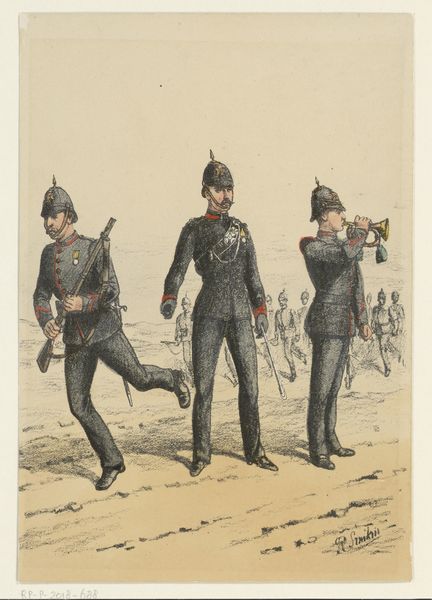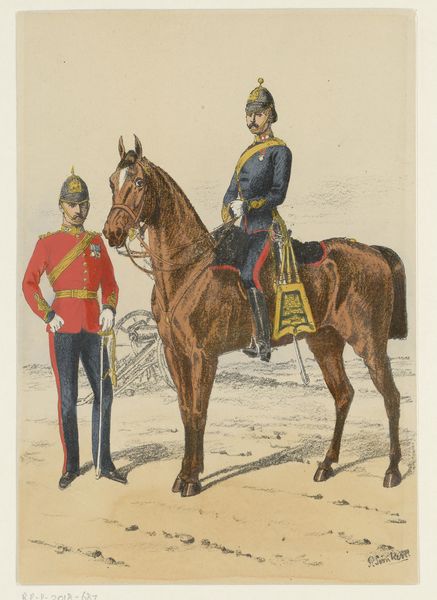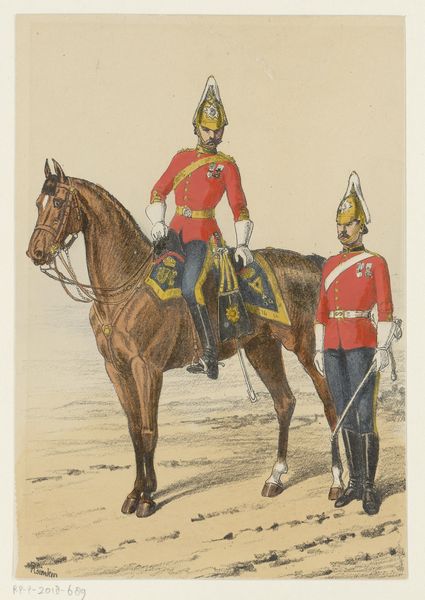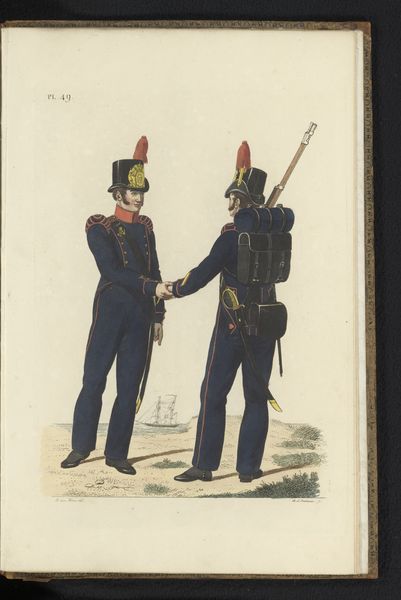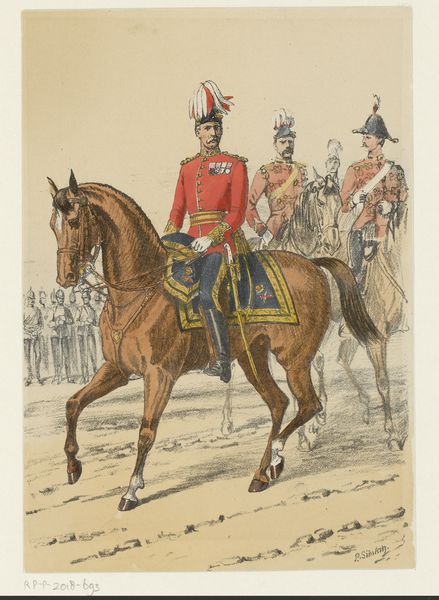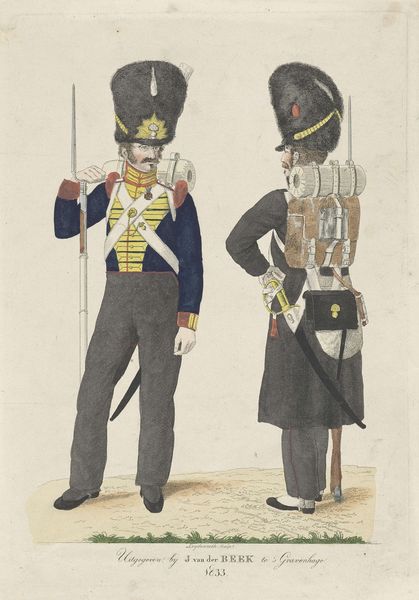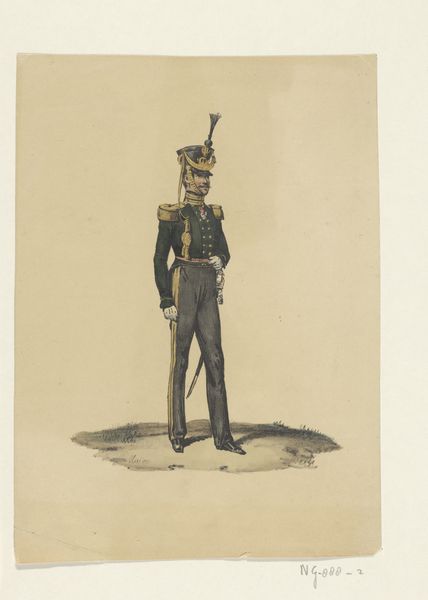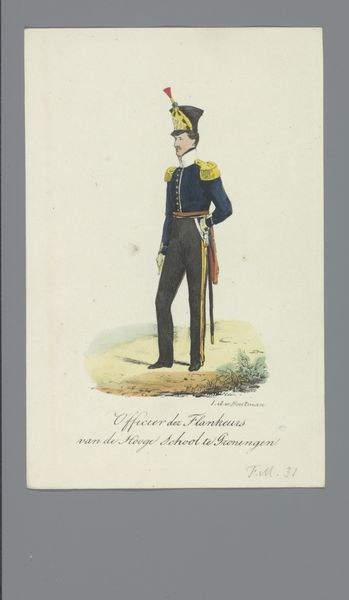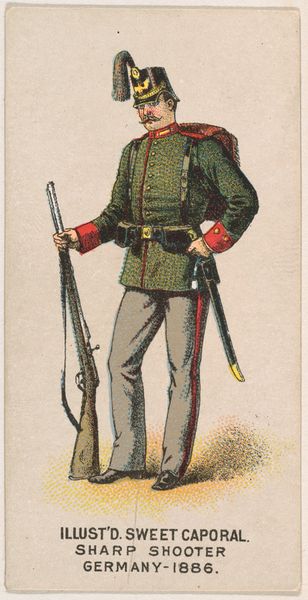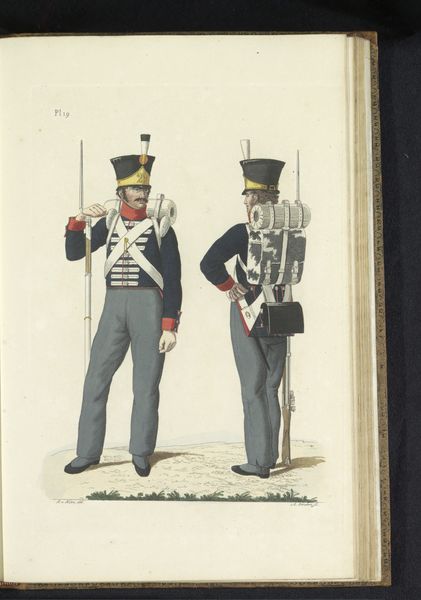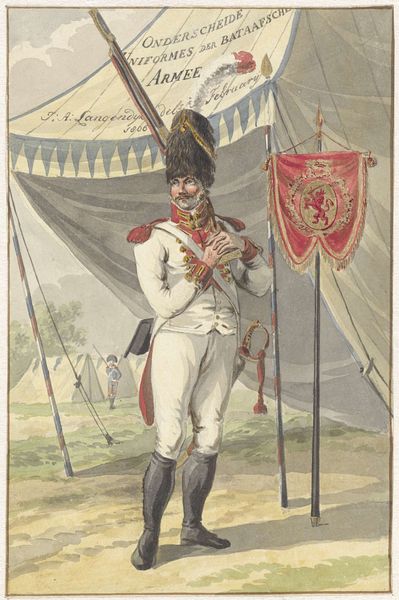
drawing, watercolor
#
drawing
#
traditional media
#
caricature
#
watercolor
#
watercolour illustration
#
genre-painting
#
history-painting
#
academic-art
Dimensions: height 185 mm, width 130 mm
Copyright: Rijks Museum: Open Domain
Editor: This is “Three British Soldiers,” a watercolor and ink drawing by Richard Simkin, likely created sometime between 1875 and 1925. The rigid lines of the figures and the stark palette gives it a formal, almost staged feel. What visual elements stand out to you most in this piece? Curator: Formally, the artist’s arrangement is quite interesting. The triptych effect achieved through the placement of three distinct figures immediately creates a system of comparison and contrast. Notice how Simkin uses color to differentiate them; the leftmost figure is primarily defined by vermillion, the center figure by shades of black and grey, and the right figure finds a middle ground. How do these color choices affect your interpretation of the subjects’ roles? Editor: Well, the use of red certainly makes the first soldier 'pop' visually, maybe signifying a more important role? And I hadn't noticed how the placement is so intentional! Curator: Precisely. Furthermore, observe the treatment of line and form. Each figure is rendered with meticulous detail, yet there’s a flattening effect. The backgrounds are suggested but not fully realized, which forces the viewer's focus on the details of their uniforms and weapons. Do you perceive a hierarchy within the pictorial space created by these devices? Editor: I see what you mean about the flattening – they almost feel like paper dolls, posed against the bare background. So you're saying that even without knowing the historical context, we can understand a lot about the artist's intent just by analyzing the composition? Curator: Absolutely. The formal elements of a work operate as a visual language, revealing meaning through their arrangement and execution. Understanding this language opens up richer interpretive possibilities. Editor: This has been really insightful; I see now how much you can decipher about an artwork just through its pure form. Curator: Indeed. Paying close attention to those intrinsic visual cues illuminates previously unseen perspectives and provokes more meaningful engagement with the artwork.
Comments
No comments
Be the first to comment and join the conversation on the ultimate creative platform.
